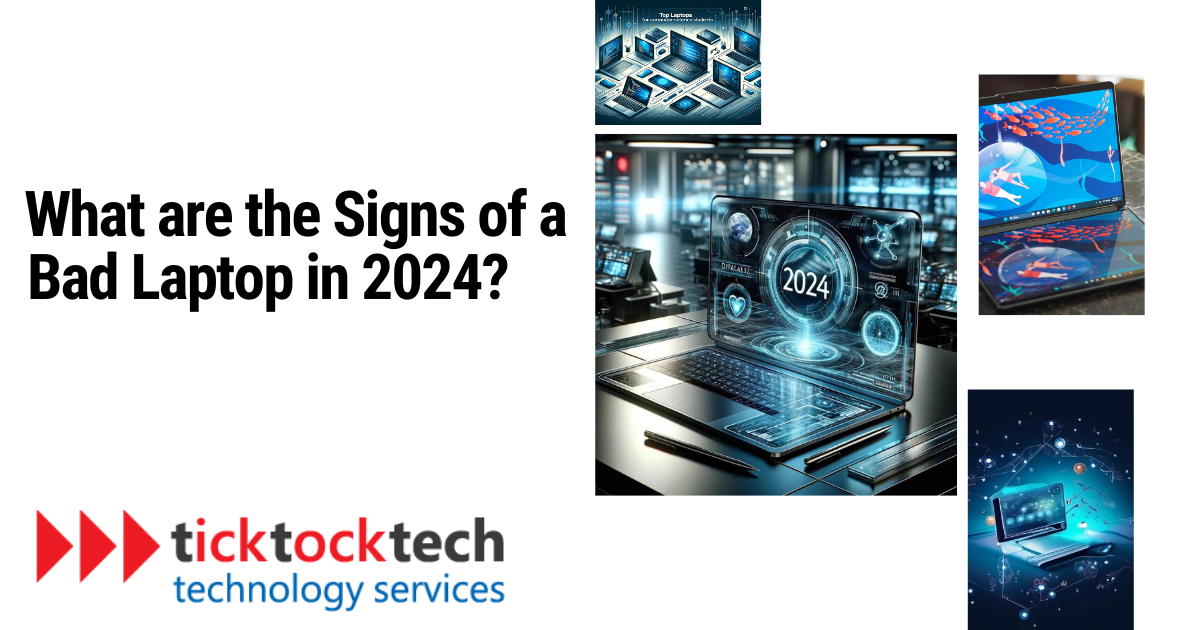Recognizing the signs of a bad laptop can help you prevent further damage and costly repairs. In this post, we’ll guide you through the key indicators that your laptop may be in trouble.
Warning Signs that Show your Laptop needs Repair
Despite the numerous benefits of today’s laptops, they are not immune to software and hardware issues. These problems go from minor inconveniences to major disruptions that can lead to data corruption or total shutdown. That’s why it’s crucial to be aware of the warning signs early before things turn out worse.
Below are the warning signs that indicate your laptop is in bad condition:
1. Outdated Hardware
One of the first and most apparent signs of a bad laptop is outdated hardware. As technology advances, laptops with outdated components will struggle to keep up with the demands of modern software and applications. Here are some specific signs to watch out for:
Slow Processor and Memory
- A laptop that takes too long to perform basic tasks like opening applications or browsing the internet.
- Frequent freezing or lagging, indicating an overloaded processor or insufficient memory.
- Inability to run resource-intensive software or games smoothly.
Insufficient Storage Capacity
- Inadequate storage space that quickly fills up.
- Constant low disk space warnings that may force you to delete files regularly.
Outdated Graphics Card
- Inability to handle graphically demanding tasks like video editing or playing modern games.
- Poor image quality while watching videos or when using graphics-intensive applications.
- Overheating issues due to the strain on the outdated graphics card.
2. Bad Battery Life
In this AI age, we rely heavily on laptops that offer long-lasting battery life. Unfortunately, a bad laptop may exhibit the following battery-related issues:
Rapid Battery Drain
- A laptop that goes from 100% to 0% within a short period, even with minimal usage.
- Inaccurate or unreliable battery percentage display.
- Inability to hold a charge, requiring the laptop to be constantly plugged into a power source.
Prolonged Charging Times
- Excessive time to fully charge the battery.
- Frequent charging interruptions or failure to charge altogether.
3. Poor Display Quality
A laptop’s display quality directly affects the user experience. Be wary of these signs that indicate a subpar display:
Dull or Faded Colors
- Poor color accuracy, with images or videos appearing washed out or lacking vibrancy.
- Limited viewing angles.
Screen Flickering or Ghosting
- Noticeable screen flickering or artifacts that distract and hamper productivity.
- Persistent ghosting, where previous images or text leave a residual shadow.
4. Unreliable Connectivity
A bad laptop may exhibit connectivity issues, hindering your ability to stay connected and productive. Look out for the following signs:
Weak Wi-Fi Signal Strength
- Poor Wi-Fi reception, with the laptop struggling to connect to or maintain a stable connection with wireless networks.
- Slow download and upload speeds, despite having a high-speed internet connection.
Non-Functioning Ports
- USB ports, HDMI ports, or other essential connectivity options that fail to work or become unresponsive.
- Difficulty in connecting external devices or accessories due to faulty ports.
Do you need urgent Laptop Repair?
Being aware of the signs of a malfunctioning laptop will help you catch problems early and prevent them from becoming more serious issues. Whether you’re dealing with overheating, slow performance, or strange noises, a professional repair service can help you get your laptop back in working order.
Need laptop repair services? Look no further than TickTockTech. At TickTockTech Laptop Repair, we offer same-day and on-site repair services to help you get your device back up and running in no time. Contact us today at (888) 958-7032 to get your laptop repaired today!
Frequently Asked Questions
Conclusion: Signs of a Bad Laptop
To ensure the longevity of your laptop, be vigilant against bad laptop signs such as outdated hardware, battery issues, display concerns, connectivity problems, and software malfunctions. Regular maintenance, software updates, and timely repairs will extend the lifespan of your laptop and optimize your computing experience.

